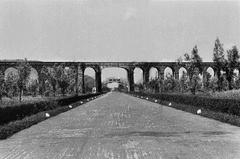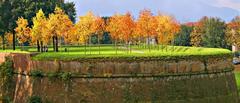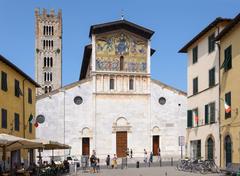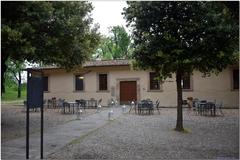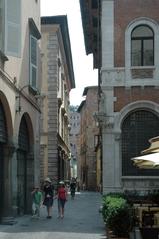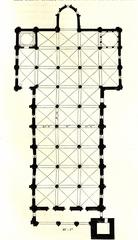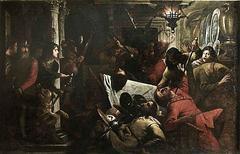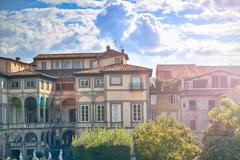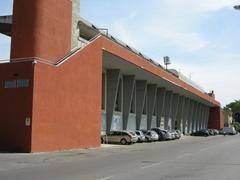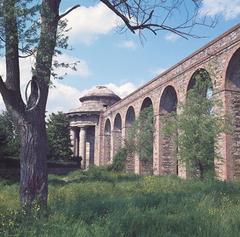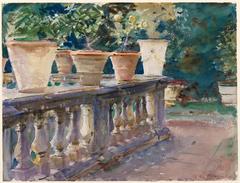Palazzo Parensi Visiting Hours, Tickets, and Lucca Historical Sites Guide
Date: 14/06/2025
Introduction to Palazzo Parensi and Its Cultural Significance in Lucca
Palazzo Parensi, located in the historic heart of Lucca, Tuscany, stands as a prominent symbol of the city’s civic legacy and architectural beauty. Lucca is celebrated for its remarkably preserved Renaissance city walls, medieval streets, and an urban landscape blending medieval, Renaissance, and Baroque influences. As a noble palace with deep administrative roots, Palazzo Parensi offers a unique window into the local governance traditions and urban development that have shaped Lucca from ancient times to the present (Italian Traditions; Turismo Lucca).
Distinct from a typical museum, Palazzo Parensi functions as an active municipal building while serving as a cultural hub for exhibitions, heritage initiatives, and public events. Its elegant façade, stately loggia, and historically significant interiors are representative of Lucchese palazzi built by prominent merchant and banking families who shaped Lucca’s economic and political landscape (Visit Italy; Il Tirreno).
This guide provides essential information on Palazzo Parensi’s visiting hours, tickets, accessibility, and tips for exploring wider Lucca historical sites. For the latest updates, consult official tourism sources and local information points (Comune di Lucca; Savoring Italy).
Historical Evolution of Lucca: From Ancient Origins to Modern Times
Pre-Roman and Roman Foundations
Lucca’s origins date to pre-Roman times, with early settlements by Ligurians and Etruscans. The city’s name likely derives from the Celto-Ligurian “Luk,” meaning “swampy terrain” (Italian Traditions). Established as a Latin colony in 180 BCE, Lucca became a Roman municipium in 89 BCE. Its placement on major routes like the Via Cassia and Via Francigena turned it into a key hub for trade and pilgrimages. The city’s Roman walls and amphitheater, whose outline is preserved in today’s Piazza dell’Anfiteatro, are enduring remnants (Turismo Lucca; Savoring Italy).
Medieval Ascendancy and the Rise of the City-State
After the Roman Empire, Lucca passed through the hands of Ostrogoths, Byzantines, and Lombards, eventually becoming the capital of the Tuscan March under Charlemagne. In 1161, Lucca declared itself a free commune, ushering in an era of self-governance and prosperity fueled by the silk industry and its strategic position on the Via Francigena (Italian Traditions). The communal period saw the construction of new city walls, expanding Lucca’s boundaries and incorporating key religious sites like the Church of San Frediano (Turismo Lucca).
Renaissance Prosperity and Political Transformations
Lucca fiercely defended its independence against rival powers, notably Pisa and Florence. The Renaissance brought renewed economic vigor, especially through silk production and banking. In 1628, Lucca became an oligarchic republic, maintaining autonomy until the late 18th century (Italian Traditions). The city’s fate shifted in the 19th century: after French occupation, Lucca became a principality under Elisa Bonaparte, later a duchy, and finally joined the unified Kingdom of Italy in 1861 (Savoring Italy).
Architectural Heritage and Urban Development
Lucca’s Renaissance city walls—spanning over 4 kilometers—are among Europe’s best-preserved fortifications and now serve as a pedestrian promenade (Turismo Lucca). The city’s center boasts a rich blend of architectural styles, with churches like San Martino, San Frediano, and San Michele in Foro, as well as the iconic Piazza dell’Anfiteatro, offering a vivid reflection of Lucca’s layered history (Italian Traditions; Savoring Italy).
Palazzo Parensi: Historical Context and Significance
Origins and Architectural Features
Palazzo Parensi is emblematic of Lucca’s tradition of noble residences. Though precise historical details are limited, it typifies the patrician palaces constructed by powerful merchant and banking families from the late Middle Ages through the Renaissance. These palazzi typically feature imposing facades with rusticated stonework, arched portals, symmetrical windows, grand interior staircases, frescoed salons, and private chapels (Visit Italy).
Role in Lucca’s Urban and Social Fabric
Palazzo Parensi, along with other notable palazzi like Brancoli Busdraghi and Gigli, contributed to Lucca’s distinctive urban landscape (Visit Italy). Positioned near major squares and thoroughfares, these buildings served as both private residences and centers for economic, political, and cultural activity. Their owners were influential in city governance and supported significant artistic and religious projects (Savoring Italy).
Visiting Palazzo Parensi: Hours, Tickets, and Accessibility
Visiting Hours and Tickets
Palazzo Parensi primarily operates as a municipal office. Public access is generally limited to business hours—typically Monday to Friday, 9:00 AM to 5:30 PM—especially for the loggia and public heritage map display (Comune di Lucca). For the most accurate information, always check the official Comune di Lucca website or contact local tourist offices.
There is no standard ticket for entry; access to the loggia and heritage map is free. Special exhibitions or guided tours during events may require booking or a fee.
Guided Tours and Special Events
Guided tours are occasionally available during special events or by appointment. Palazzo Parensi also participates in cultural programs, such as the Lucca Historiae Fest or the Lucca Summer Festival, where public access may be expanded (ItalyScapes). Check event calendars for opportunities to join tours or attend exhibitions.
Accessibility
The main entrance and loggia are at street level and accessible to visitors with mobility challenges (Il Tirreno). Access to upper floors may be restricted due to historic staircases. For specific needs, contact the municipal office ahead of your visit.
The territorial heritage map is fully accessible online, offering interactive digital exploration (Comune di Lucca).
Travel Tips and Integrating Palazzo Parensi into Your Lucca Itinerary
- Best Time to Visit: Spring and early autumn offer mild weather and fewer crowds. Major festivals like the Lucca Summer Festival bring vibrant energy but larger crowds.
- Getting There: Palazzo Parensi is within Lucca’s pedestrianized historic center. Arriving by train or parking outside the walls and walking in is recommended (Sommertage).
- Nearby Attractions: Combine your visit with the Cathedral of San Martino, Piazza dell’Anfiteatro, Basilica of San Frediano, and walks along the Renaissance city walls.
- Amenities: Cafés, restaurants, and public restrooms are plentiful around Via Fillungo and Piazza San Martino (The Travel Folk). Tourist information is available at Infopoint Mura di Lucca.
- Photography: Non-flash photography is permitted in public areas; confirm before photographing interiors during events.
Frequently Asked Questions (FAQ)
Q: What are the visiting hours for Palazzo Parensi?
A: Generally, Monday to Friday, 9:00 AM–5:30 PM, but always check for special event schedules or holiday changes.
Q: Is there an entry fee?
A: Access to public areas is free; special events or exhibitions may require a ticket.
Q: Are guided tours available?
A: Occasionally, during events or by appointment. Contact the Comune di Lucca for current options.
Q: Is Palazzo Parensi accessible for visitors with disabilities?
A: The loggia is accessible; upper floors may have limitations.
Q: What other historical sites are nearby?
A: Cathedral of San Martino, Piazza dell’Anfiteatro, city walls, Palazzo Mansi, and Villa Guinigi.
Architectural and Civic Significance
Palazzo Parensi is both a historic and living civic space. It regularly hosts exhibitions, receptions, and public meetings, integrating contemporary community life with Lucca’s heritage (Il Tirreno; italia.it). The building’s integration into the urban fabric exemplifies Lucca’s dedication to preserving its unique identity while fostering civic engagement.
Plan Your Visit and Stay Connected
- Check the Comune di Lucca website for the latest hours and event updates.
- Download the Audiala app for curated tours, maps, and insider tips on Lucca.
- Follow official channels and social media for real-time news on events and accessibility.
- Combine your Palazzo Parensi visit with a walking tour of Lucca’s historical core, taking in the city’s renowned piazzas, museums, and walls.
References and Further Reading
- Italian Traditions – Lucca Medieval City in Tuscany
- Turismo Lucca – City Walls Lucca History
- Savoring Italy – Lucca Italy
- Visit Italy – Castles, Palaces and Mansions in Tuscany
- Il Tirreno – Online and at Palazzo Parensi: The Territorial Heritage Map
- Comune di Lucca – Palazzo Parensi
- ItalyScapes – Lucca Summer Festival 2025
- italia.it – Lucca Guide History Facts
- Lucca Historiae Fest
